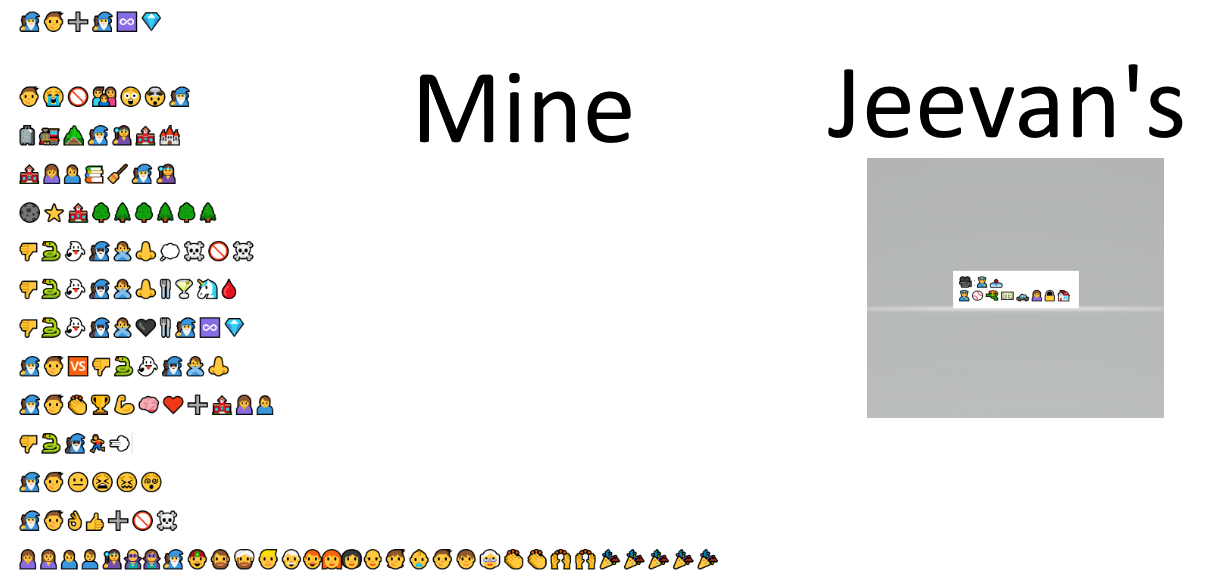For the third linking assignment, I am linking to Jeevan Pannun’s Task 6 (Emoji Story).
A Comparison of Experiences
Looking at the “final product”, the first thing that jumped out at me was the size of the end product. I took a more “wordy” approach by using more emojis to communicate the plot summary, while Jeevan kept it simple and used minimal emojis.

One similarity to our approach was the use of words and ideas. We both agree that using syllables would be more difficult.
Jeevan started with the title, while I started with the summary. Upon reflecting on Jeevan’s explanation of why they started with the title first, I agree that it is an appropriate approach. However, I had a difficult time guessing the title from the emojis. The embedded image was very small, which made the emoji’s difficult to see. My best guess would be some sort of movies involving cops, but I am unclear about the second emoji. Is that a church? A school? An outbox tray? Is this Police Academy? or 21 Jump Street? or Police Outbox Tray? I was unable to guess the title. I definitely was unable to decipher the synopsis.
Jeevan also mentioned that they chose this particular film because “its title would be easy to visualize”. I chose my film because it was the most recent film that I watched when I wrote the post.
Comparison of Web Authoring Tool and Literacies
Jeevan and I both used similar tools for this assignment. From the layout of their final product, I assume they also used some form of emoji keyboard.
Jeevan’s synopsis was concise, while mine was more a lengthy summary. This may suggest that Jeevan is more comfortable and fluent with emojis, while I am less confident of my ability to communicate clearly through the use of emojis.
For the layout of the post, we also both used an image of the emoji summary along with written text below the image to provide additional details. Both our approaches to the design and layout for this assignment are limiting in that only those who are literate can access the information we presented in our reflections. To make our posts more accessible, one approach could have been to conduct the reflection via a voice recording or video. It is also possible to do a combination, where a audio/video clip is accompanied by the written transcript.
Constraints of Course Design
The directions for this assignment was quite clear and it left room for individual students to decide how to best conduct the reflection portion of the task. As discussed above, both Jeevan and I opted to include a screenshot of the emoji summary, then used written text to communicate our reflections. Perhaps if we used a multi-modal approach for the reflection portion of this task, it may have made our posts more accessible for everyone.

